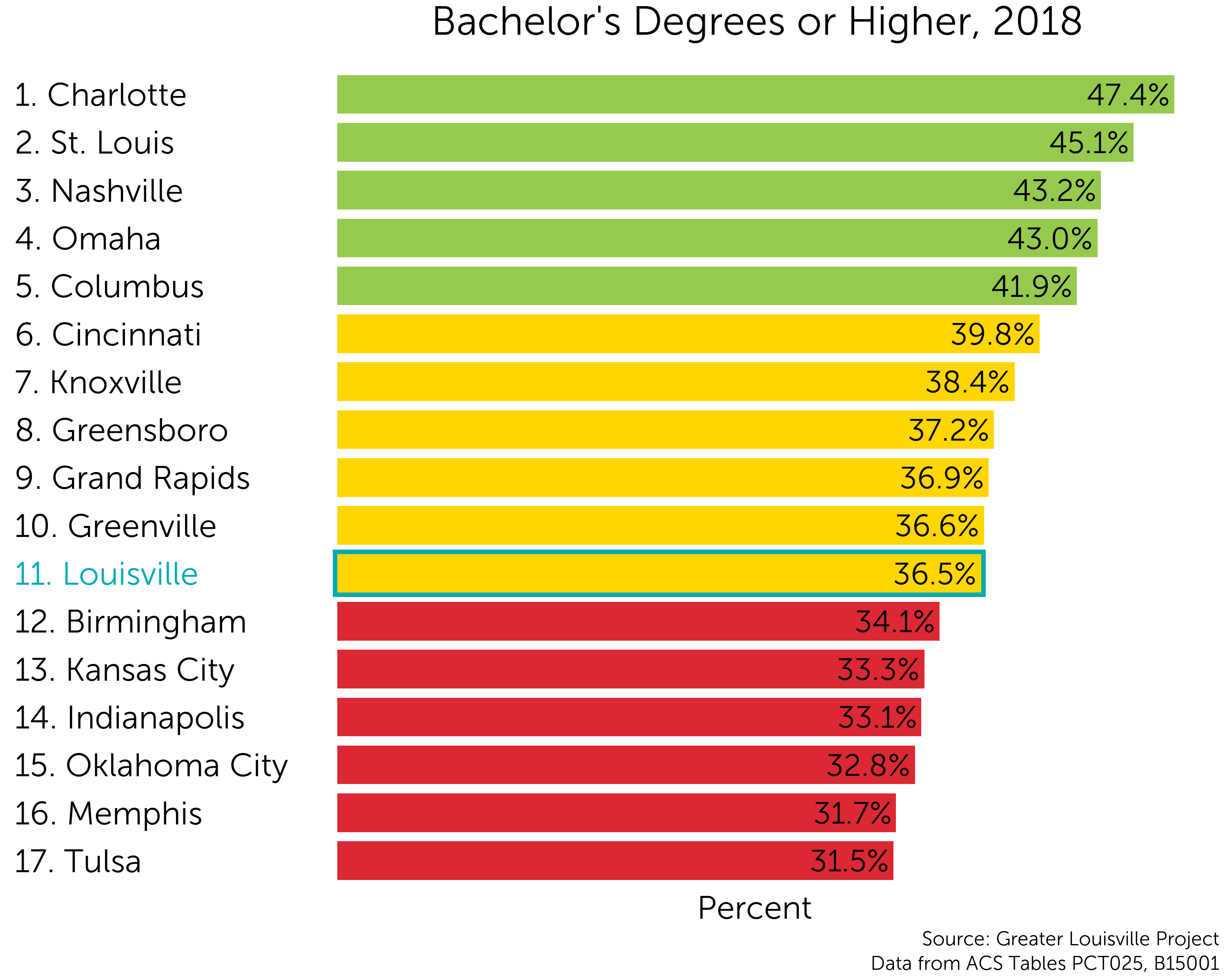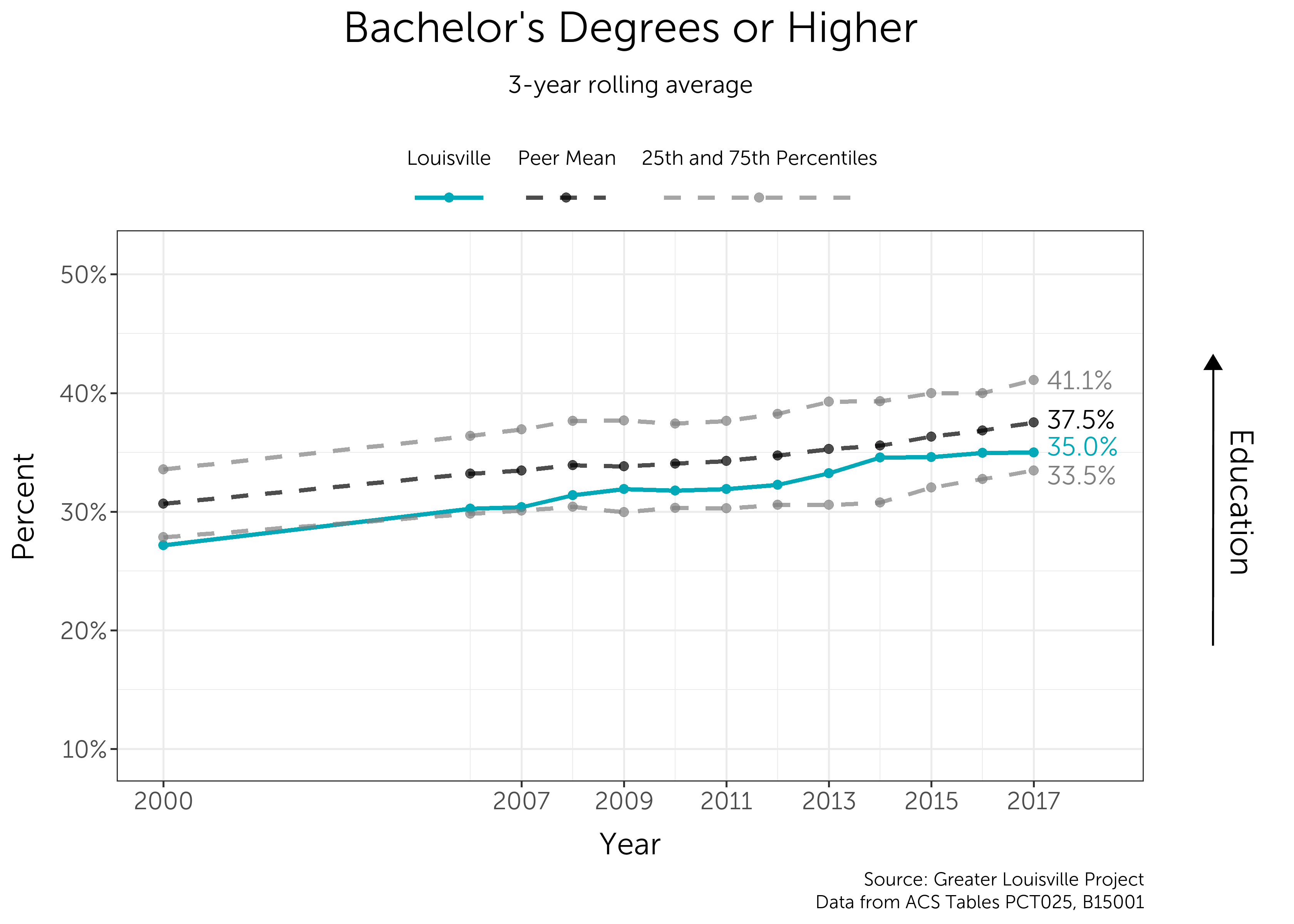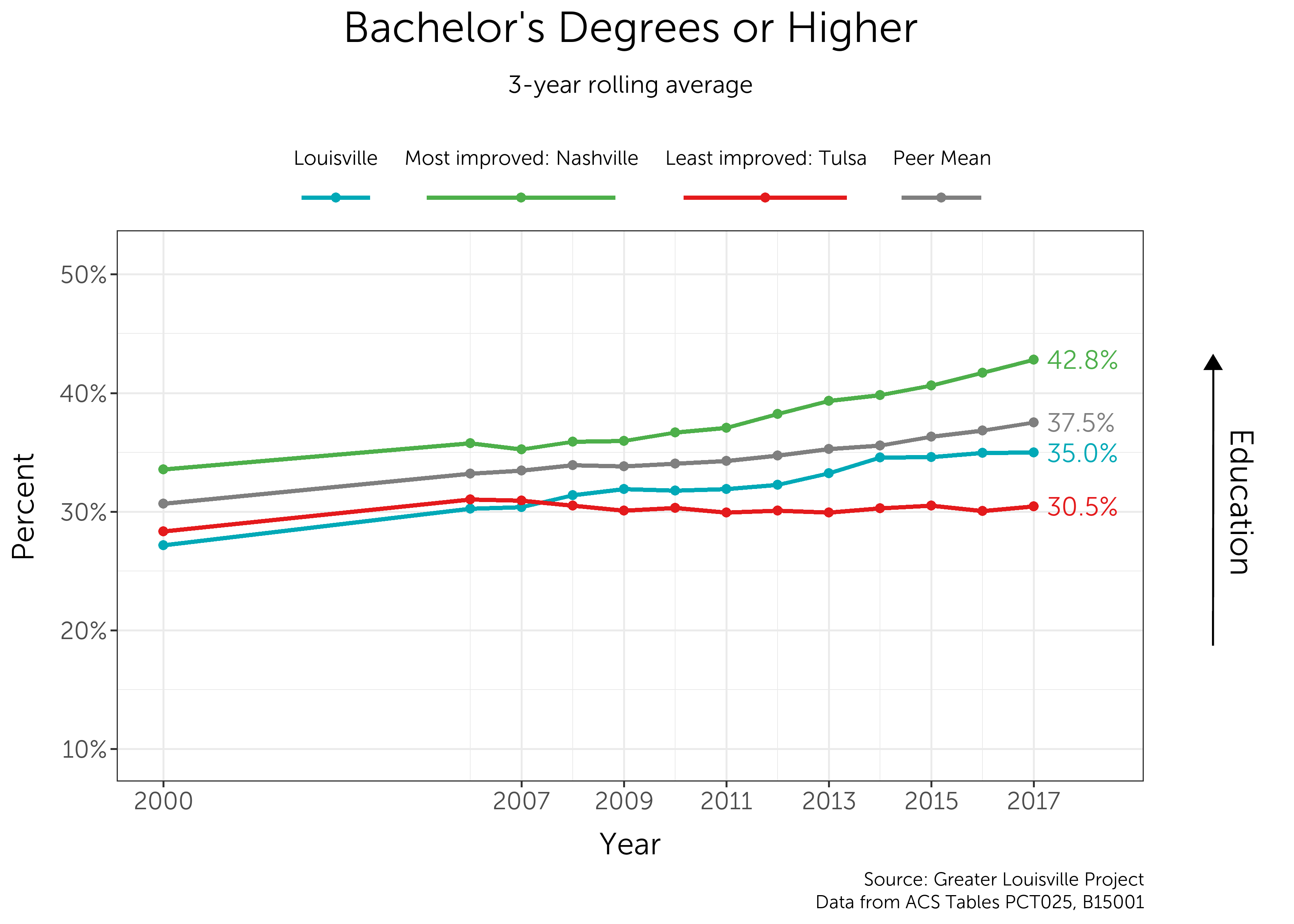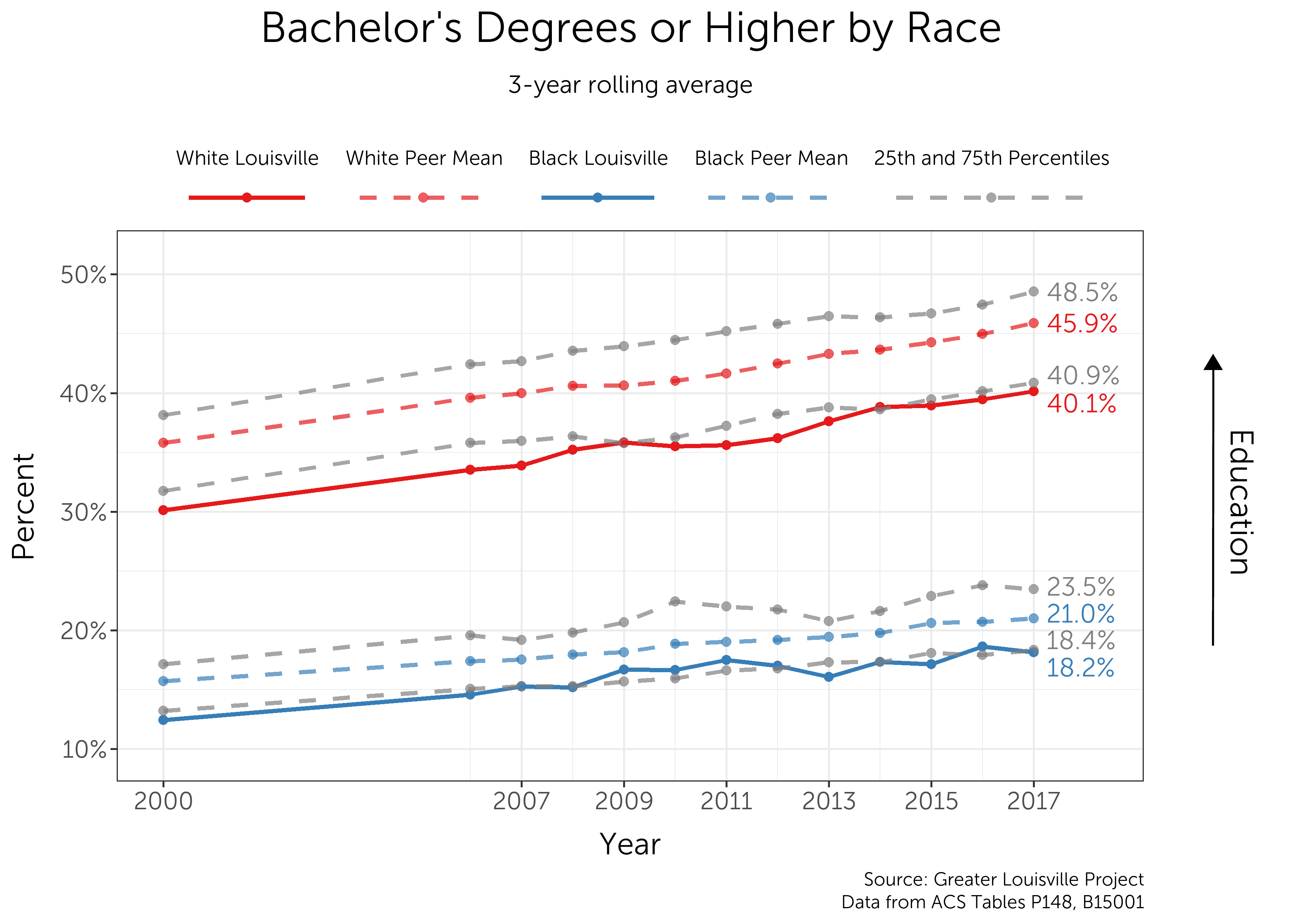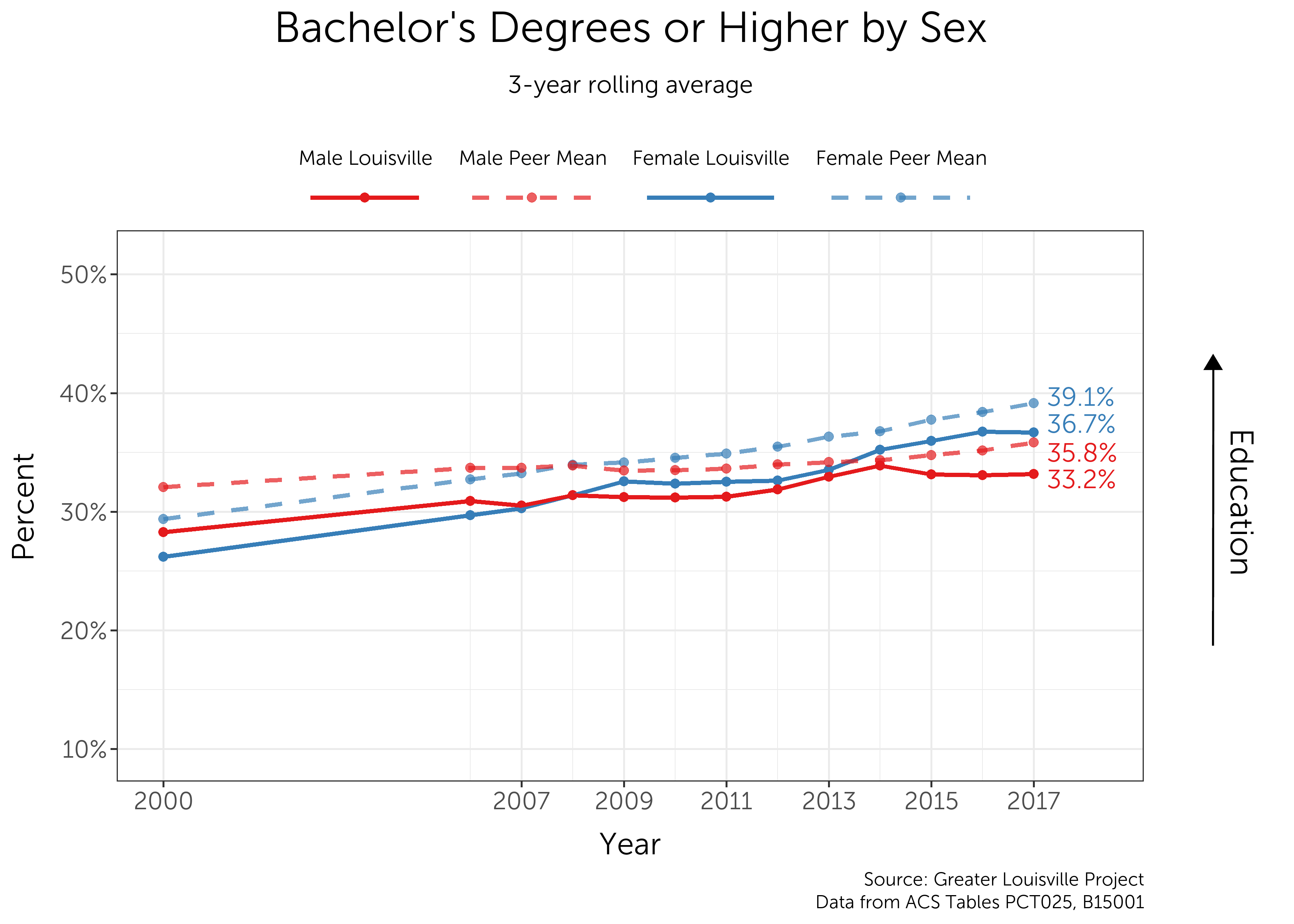Bachelor’s Degree or Higher, Ages 25-64
Postsecondary education is a significant factor in determining the lifetime earning potential of the average American, making it a critical variable in combating multidimensional poverty. Measuring educational attainment and employment success is crucial in understanding the success of the K-12 educational system. The main metric for postsecondary education is the percent of working age adults with a bachelor’s degree. Louisville has a target goal of 40% of working age adults holding a bachelor’s degree or higher.

